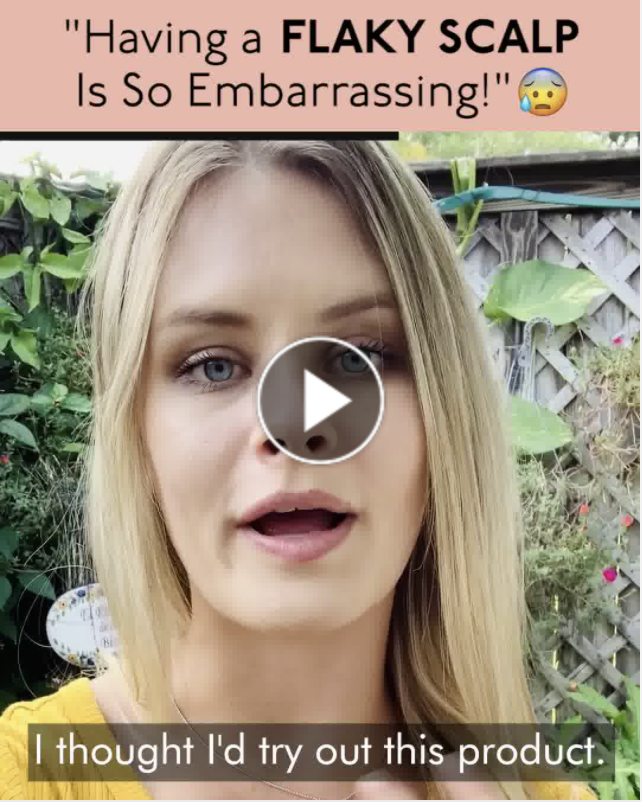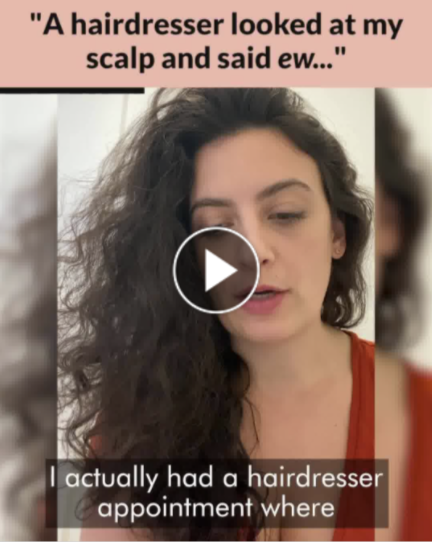Intro
Getting started is the hardest part of the eCommerce business.
We decided to challenge ourselves in a new way, create a brand from scratch and scale it to the $100k monthly revenue mark.
Why $100k you might ask? Because we have scaled brands from $50-100k to 2-3 million multiple times, so we already know the formula on how to do it.
This will be a 4 section article sharing the most important things we did to scale a completely new business from $0 in sales to over $100k in monthly revenue in just 3 months.
Research: Key Component of Scaling Your Brand
Without good research, you won't be able to have highly converting ads & copy, and that's the fact!
Before planning to create any videos or copies, you must research your target audience & competitors; without it, you will have no idea which direction you should go with the ads.
First of all, you need to understand who your customer is. We have prepared a set of questions that you need to answer to fully comprehend your target avatar: CLICK HERE.
And here is how you can find all of the answers to your questions:
Also, when you're researching and filling out the avatar's questions, you can start writing down your ideas on video ads, what kind of angles your target audience would be interested to see, what kinds of keywords trigger them (you will be able to use it for the copy & headlines) and any other notes that you gather from all of this information.
Taking thorough notes during the avatar research will save you time and allow the whole process to go much faster.
Once you have good research done about your target audience and written ideas on what angles you would like to test, you can start working on the next step.
Getting High-Quality Content Fast & Cheap
The key to making ads work, especially in the beginning is high-quality converting content, which is so hard to get when you're just starting.
So we needed to find a way to get high-quality video content cheap and fast - since we are a performance agency, we always want to get the results as quickly as possible.
We tried working with Instagram influencers - it seemed like a good idea.
But it wasn't...the content looked staged and fake.
You see, most Instagram influencers don't know how to talk in front of the camera. It’s a similar experience we’re having when we use Billio.
It's not their fault, it's just that Instagram influencers are mainly focusing on different kinds of content - branding & pictures are their strongest part.
So we decided to stop working with influencers and instead try actors - it seemed like another great idea!
And YES! We finally found what we were looking for!
But first, one caveat. Since we needed content for cheap, we couldn't go to the actor agencies and ask them to pick the right actors for us. It would be a very expensive process.
So instead, we looked for beginner actors who were well-spoken & highly motivated to improve their skillset.
We have used Instagram to find these beginners actors, here is how we did it:
After we picked the right actors we learned that having this process helped a lot to improve the content quality:
- Ask actors to send a test video. It could be just a few lines from your script, but the most important thing - you need to see how she/he talks. When you receive the test video, ask yourself these questions:
- Does she/he naturally express emotion?
- Do you believe what she/he is saying?
- Are they a good fit for your brand?
If you feel like she/he won't be able to deliver the needed content - don't waste your and hers/his time because most likely the outcome will be disappointing. Focus on the actors that can deliver without any hesitations.
- Now you need to schedule a call with her/him to give clear expectations, explain more about the project and answer any questions they might have. This way you will be sure that you have onboarded the actors properly and prepared them for the content creation.
- Prepare your storyboard for the whole video with direct marketing copywriting principles and ask them to use it to film the content. Don't limit them by asking to film the storyboard exactly word for word. Leave at least some room for improvisation because it will help actors to adjust the storyboard based on their skillset. Preparing your storyboard is a very important step, so do thorough research before beginning this process.
In a week or two, you will get high-quality, affordable video content and you will be able to use the same actors to cover even more angles in the future. This strategy helped us to test a lot of different stories and angles, one of them caught our target audience’s attention and helped us scale the brand from 10-20K revenue to over 100K monthly revenue in just 14 days.
Creating Ads + Video Conversion Principles
Once you have content for your video ads you can start putting together some highly converting ads.
Here are the principles that we are using to create the highly converting ads:
Give Proper Thought To The First Scene
The first 1-3 seconds of the video are the most important part of the whole video because attention is the most important currency on social media advertising. If it doesn't catch people’s attention, you're probably just going to waste your money.
What we do is write down all of the ideas we have for the first scene, ideas that are shocking, emotional, or even crazy will have the biggest chance to perform. So go on Facebook, Instagram, or any other social media to examine videos and analyze your competitors. Watch some YouTube videos of your target audience and generate ideas on how you can compete in that space.
Don't limit yourself with ideas, remember you have actors that are capable of doing almost any scene you ask them to do. If it's something that you would like to do yourself - go for it. One of our best first scenes was shot in my house with my iPhone.
Top Bar
Simply add the headline or catchy sentence to the top of the video with a color background.
From your research, write down at least 10 different headlines that your target audience would resonate to catch their attention. Put it on the videos and you will have higher CTRs.
Here is some of the example of good top bar title:


Show The Most Important Feature/Problem Solution Of The Product
Maybe this will be obvious, but I see this mistake being made over and over again by a lot of brands.
When you're writing a storyboard for your videos, you must focus on the things that your target audience wants to know and would make them buy your product.
For example, if you're selling an acne solution, talk about how it helps to solve acne, how long it takes to get the first results, what they should expect results, and what kind of pain points it helped to remove from their life.
Girls with acne usually are scared to show their faces in public, because they are afraid they will be judged. This is a huge pain point for them and it needs to be addressed that your product will not only help them to remove the acne but also remove their insecurities.
I hope you got the point! If not, here are some good examples of video storyboards:
Video ad with a good storyboard that targets their audience main pain points:
Focusing on your target audience’s biggest pain points will help you save money on ads and have a higher ROI.
That's why we always say that research is key to creating highly converting ads & copy. Because the better you know your target audience & their weaknesses, the better you will be able to communicate that in your ads & copy which will result in a higher conversion rate.
Making It Look Genuine And Not Fake
This sounds simple, but it's not.
When you finish working on your ad (or receive the ad from your video editor) try to put yourself in your target audience's shoes, try to imagine yourself as that girl/guy who is going to be watching your ad knowing nothing about your brand.
Ask yourself these questions:
- Is it believable? Does the information that is being presented make sense and feels genuine?
- Does the whole storyboard have a logical sequence? Are there any sentences that you feel like the video is missing out on?
- Would it make you curious to try the products? Do you believe that it could help you solve your problem?
We always try to ask at least a few of these questions with a new ad, because people can detect if an ad is not genuine, fake, or missing some key information. We always try to overcome this by making the ad look genuine and contain all of the necessary information to answer any objections or questions.
Here are some of the examples of ingenuine content:
Showing Emotion
It's a very important part of the video and one of the requirements that we ask from the actors. They must show emotions in the video.
It is difficult to get emotion from actors that feel authentic and genuine.
If your content creators (or actors) manage to get it - you're very lucky, because it is a very fine line between showing a high uplifting emotion and not looking like you're faking.
Viewers will judge it right away and nowadays people can spot it in just a few seconds. If it looks fake, they will skip your ad and write it off entirely.
Here are few videos on how genuine high emotions looks like:
Of course, if you don't have this kind of content right away, don't worry, try to work with what you have right now, along the way you will get this type of content and it will help you to scale your business a lot!
CTA At The End (Tell Them What To Do)
At the end of the video, you should let your viewers know what next action they should take. Maybe it will sound silly but some people need this and we see higher CTR when you have a call-to-action scene at the end of the video.
In the beginning, you can just use simple CTA like "Click here to shop" or "Shop now":


Along the way, you can test different CTAs and add offers like "20% OFF for the next 24 hours" or "click here to get 20% off before it's gone".
Something that would give creates urgency and they would desire to take an action right away.
This won’t give a huge increase in video conversion rate compared to the standard CTA scene, but we noticed a small increase in conversion rate for those specific ads.
Starting The First Ad & Scaling Beyond $100K (Ad Buying)
This will be divided into 3 parts: The first campaign, daily ad account management, and scaling.
Since there are multiple ways to do media buy profitably, keep in mind that you don't need to follow the exact process. Try to understand the thinking behind it and use your own ways. It's important to keep in mind that Facebook is constantly changing and so are other social media channels, so adjust the strategy based on what is working currently.
The First Campaign
I started with an ABO with one general audience (letting Facebook determine which audience to use) and 10 different ad sets of interests. In total, 11 ad sets with a $20-$30 daily budget. It’s important to adjust your daily budget based on your product price and AOV. My testing daily budget is about 20-30% of the product price or a minimum of $10 daily budget.
The goal here is to see which of the audiences perform better and overall how the market accepts the product with the first ads.
Keep the ads running for at least 2-3 days before judging the results.
Most likely, you won't have a positive ROI right from the start so you shouldn't expect great results.
I would consider results to be good if you reach at least 1.2-1.5 ROI. For most eCommerce business with COGS of 20-30%, that would be breakeven ROI.
From that point, you can optimize and make the ROI increase by testing more ads and optimizing the ads.
If you haven't received any sales, don't worry. It's all about testing and understanding where the problem is.
Great CTR & cheap clicks, but no sales? Most likely the problem is your landing page.
You have a conversion rate of 2-3%, but a low ROI? You need to improve the ads or audience that you're targeting because you are paying too much for the click.
Keep in mind that this is just a very broad inspection, do your own analysis on the account and understand what you need to improve in the funnel.
Daily Ad Account Management
I am not going to go into details here because with this topic there is no right or wrong answer, there are so many ways you can do it.
What do we focus on day-to-day?
Optimizing the purchase conversion CPC because we knew that our conversion rate is around 2-3% so we need to keep the CPC below $1.4 to have positive ROI.
We trimmed ads fast (allowing them to run at least 3-4 days and if it doesn't work - they most likely will never work).
We tested several different audiences on the ABO level to find our best-performing interests so we could stack them later on.
And we focused on generating new ideas to test: that included different ads formats, angles, ad copies & headlines.
And of course - we analyzed all of our ads, tried to understand why some of them were performing and others didn’t. This is a very crucial step that a lot of ad buyers forget to do.
So as you can see there is no secret formula - cut the losers fast, generate new ideas, test a tone & analyze the data.
Scaling
Keep doing ads testing until you find the right creative to scale.
How do you recognize those creatives?
You will see when you will have it.
In the first 1-2 months, we were spending about 4-15k a month with 1.5x ROI, just at the break-even ROI level.
We tested a bunch of ads every single week. We tested over 15 different angles, 4 different video formats (testimonial, unboxing, TikTok style, informational style videos), over 20 image ads until we came across one highly converting video ad.
On the first day with a $20 daily budget it already got 5 sales and the clicks were cheaper by 20-30% compared to other ads.
It essentially begged us to put more ad spend on it.
So we created a new campaign just with that angle and different variations of it: different copy, headline, first scenes (in total 10 ads), and we added a $500 daily budget.
Within 2-3 days, the ROI was stable at around 1.5x.
But then, it went up to 2.5-3x ROI and we started simply putting more money into that ad.
Every day increased by 20% of the budget until it reached over a 1k daily ad spend.
At that time we had inventory to handle about $100-110K revenue per month.
So we didn't want to push it further because we knew that the whole business would break.
Now you see - when you find the ad that is going to take you to that next level, you will see right away.
It will beg for more ad spend and all of the numbers will look on point.


